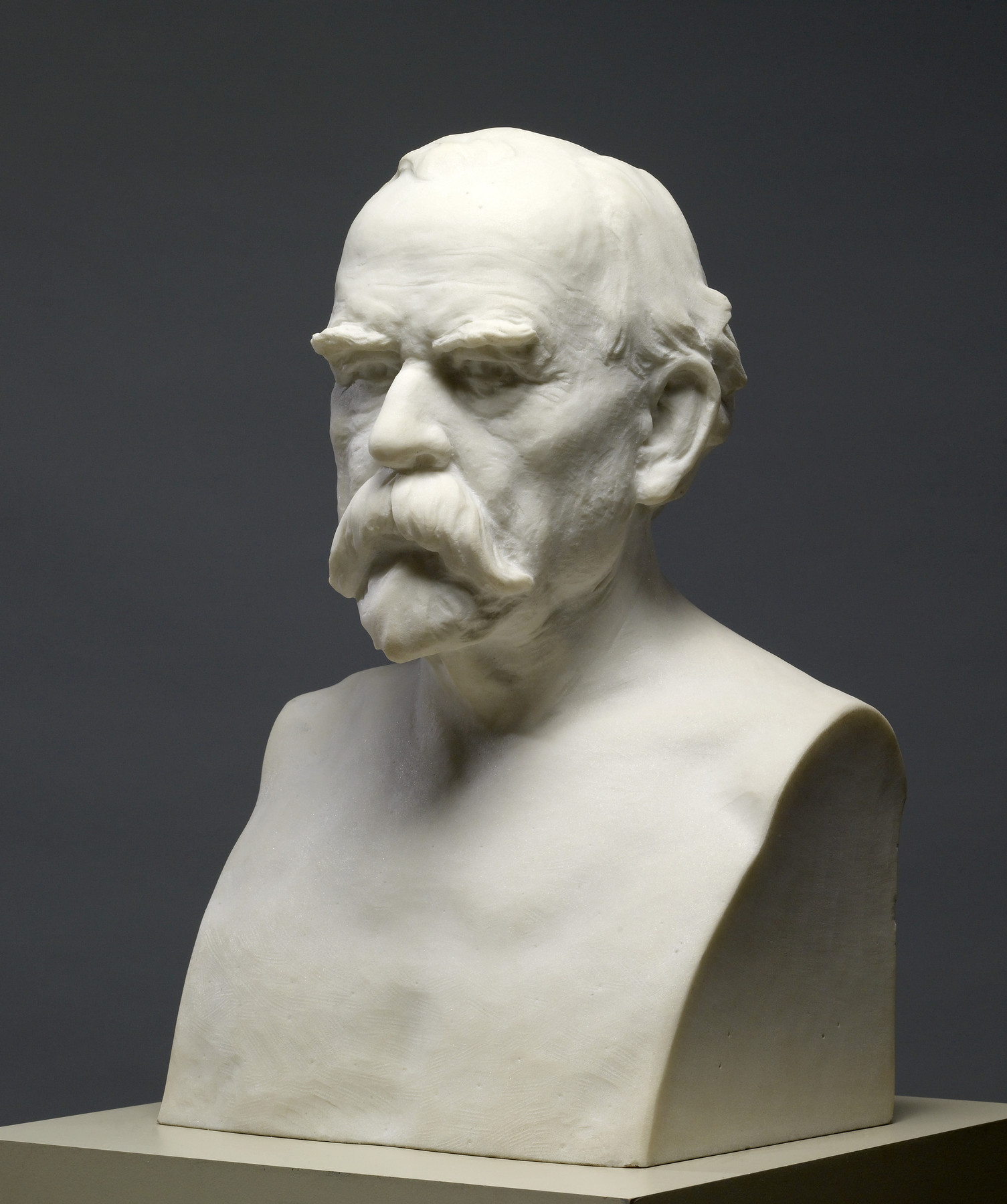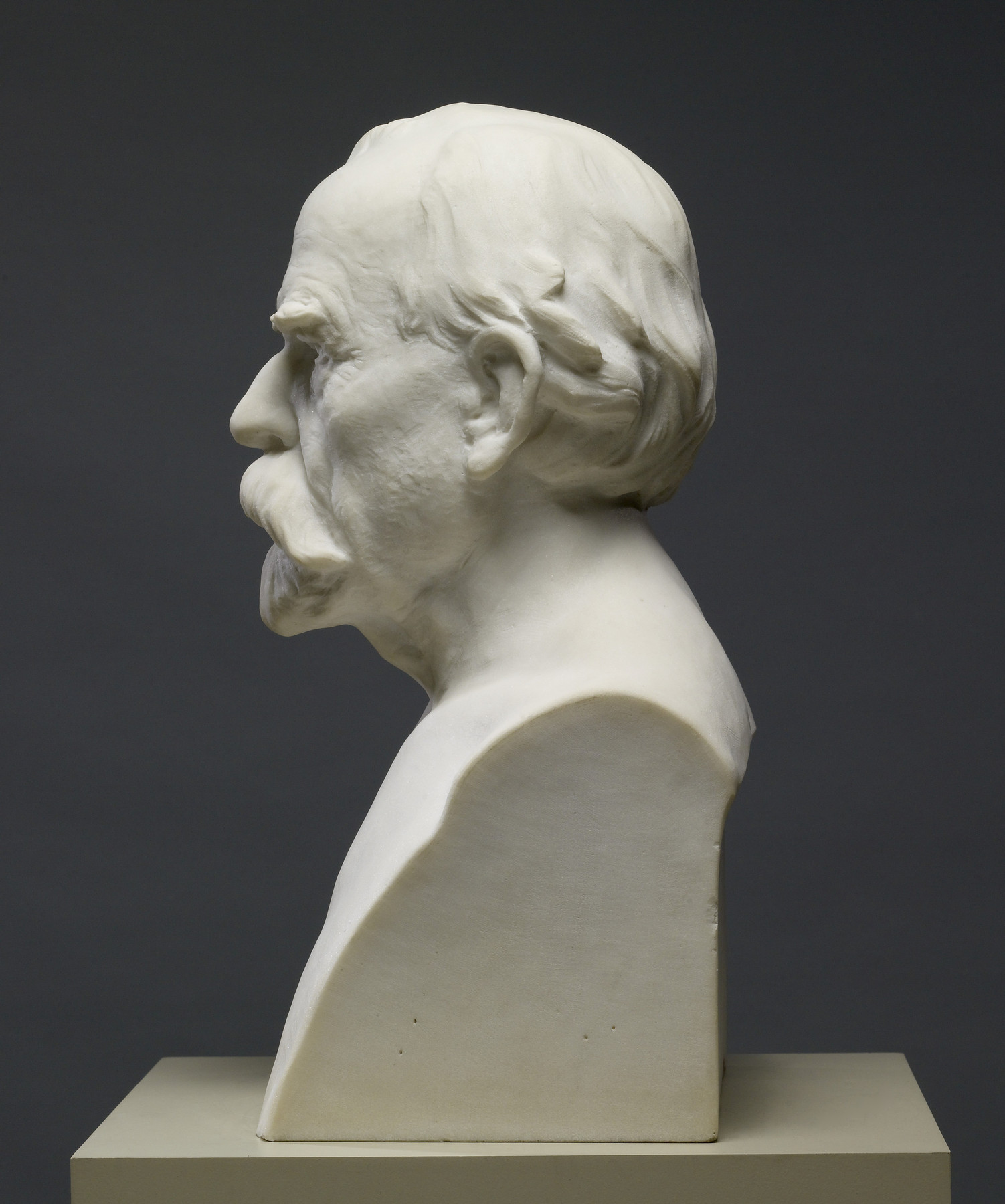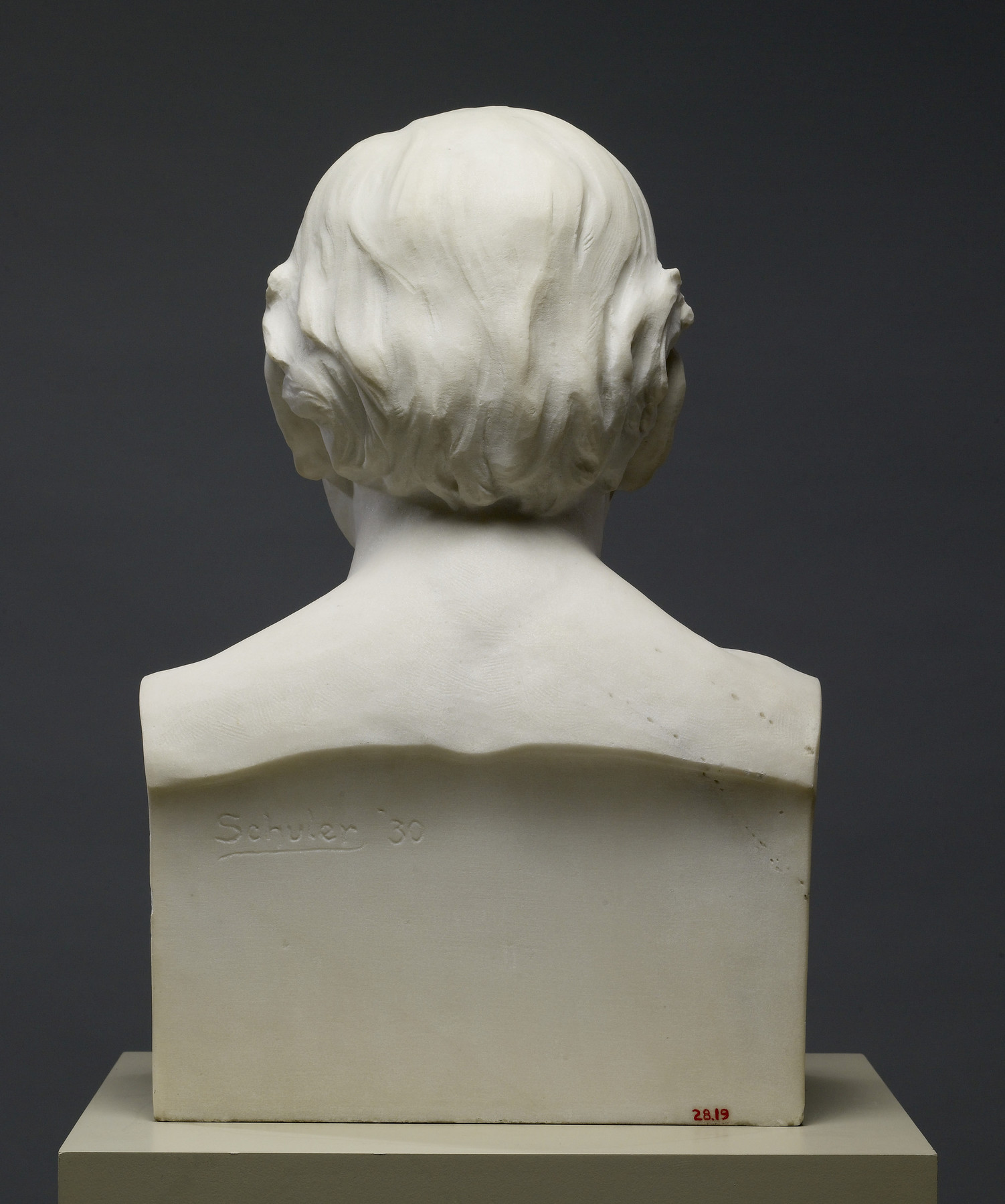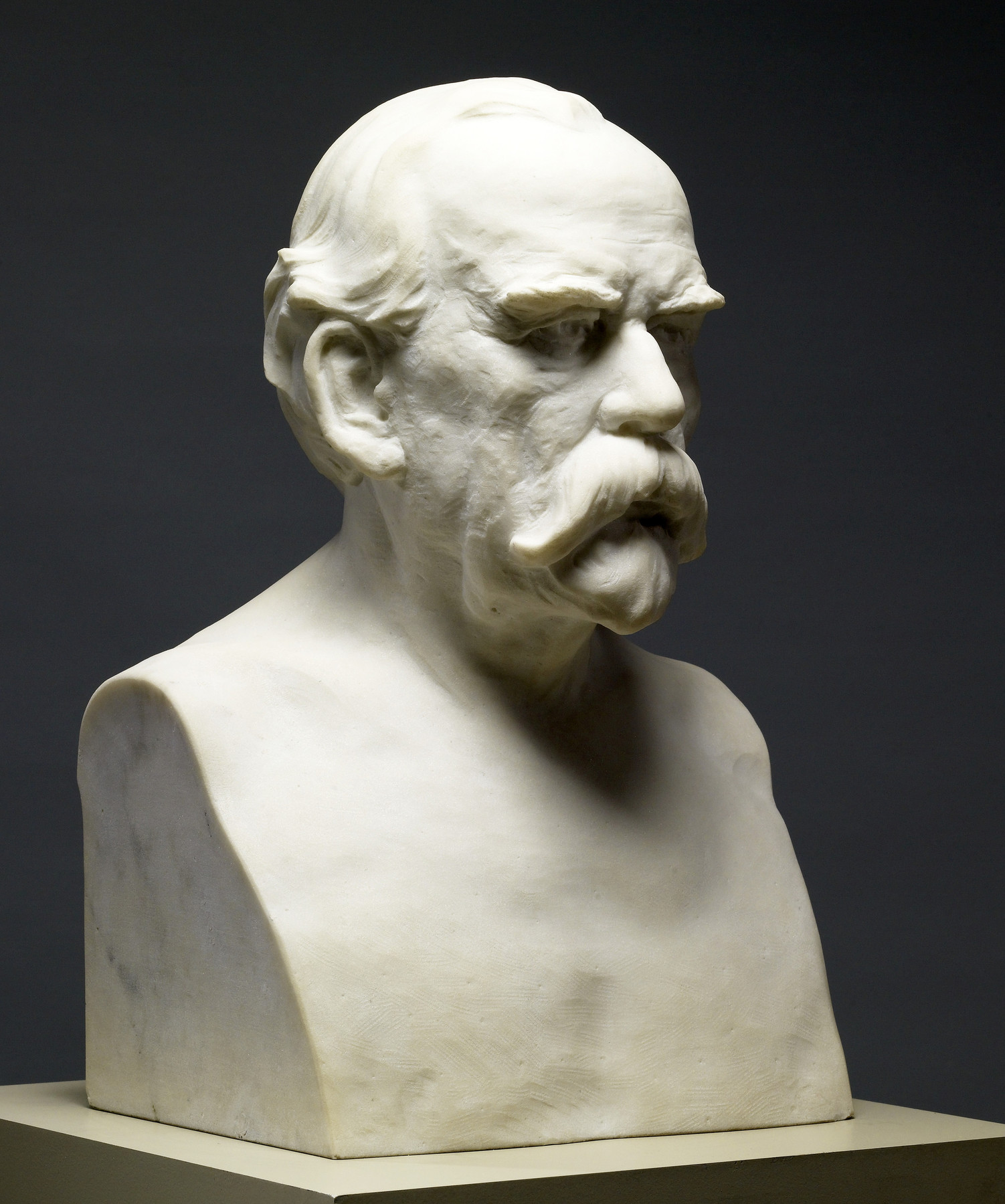Bust of Henry Walters
(18th and 19th Centuries )
This bust was commissioned in 1930 shortly after the bronze version [WAM 28.5] and derives from the same plaster model. It was intended as a pendant to the marble bust of William T. Walters, Henry's father, by Rinehart [WAM 28.9].
Schuler, a native of Lorraine (in present-day France), was raised in Baltimore and attended the School of Art and Design at the Maryland Institute. He received the Rinehart Prize, enabling him to study in Paris. After receiving awards at the Paris Salon, Schuler returned to Baltimore, where he pursued a highly successful career as the city's leading sculptor.
Provenance
Provenance (from the French provenir, 'to come from/forth') is the chronology of the ownership, custody, or location of a historical object. Learn more about provenance at the Walters.
Sadie Jones (Mrs. Henry Walters), New York [date and mode of acquisition unknown]; Mrs. John Russell Pope [date and mode of acquisition unknown]; Walters Art Museum, 1947, by gift.
Conservation
| Date | Description | Narrative |
|---|---|---|
| 6/10/2015 | Treatment | Cleaned for exhibition |
| 6/10/2015 | Treatment | The bust had been in storage for many years. The surface was cleaned using erasers, cosmetic sponges and swabs dampened using citrate solution buffered to pH 10-11 to remove dirt and grime. |
Geographies
USA, Maryland, Baltimore
(Place of Origin)
Italy, Carrara (Source of Materials)
Measurements
H: 19 11/16 × W: 12 13/16 × D: 8 9/16 in. (50 × 32.5 × 21.8 cm)
Credit Line
Gift of Mrs. John Russell Pope, 1947
Location in Museum
Not on view
Accession Number
In libraries, galleries, museums, and archives, an accession number is a unique identifier assigned to each object in the collection.
In libraries, galleries, museums, and archives, an accession number is a unique identifier assigned to each object in the collection.
28.19














